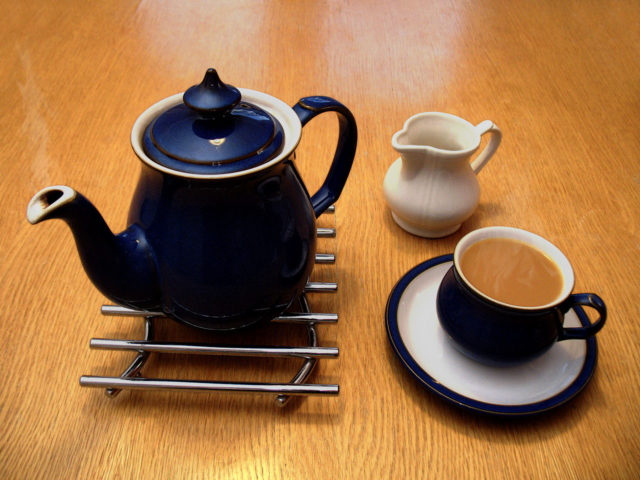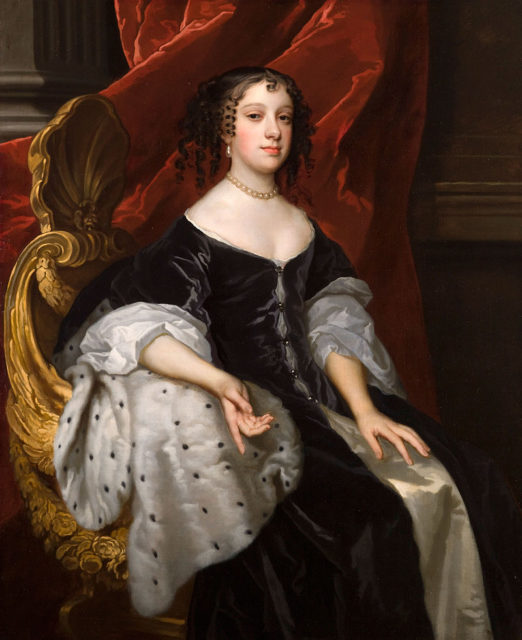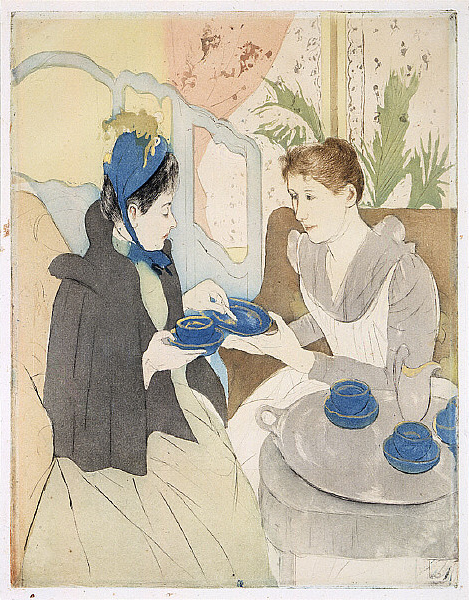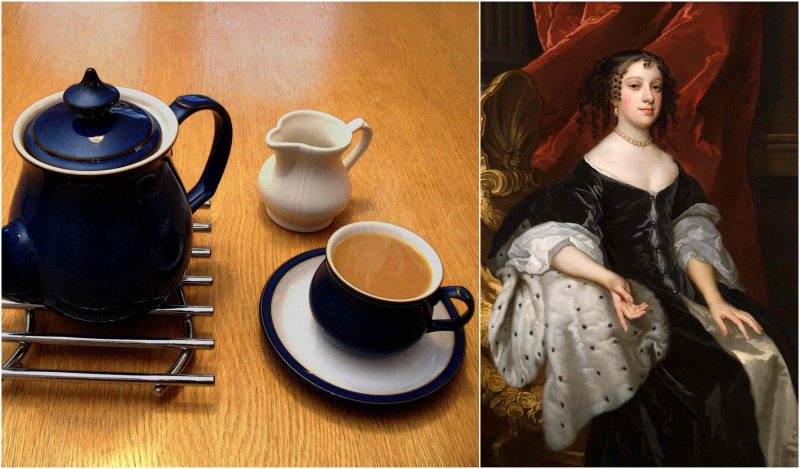The written first record of tea in English came from merchants traveling abroad. In 1615, Richard Wickham, who ran an East India Company office in Japan, wrote a letter to traders in Macao requesting that they bring him “a pot of the best sort of chaw.” Peter Mundy, a traveler and merchant who came across tea in Fujian, China in 1637, wrote, “chaa — only water with a kind of herb boyled in it .”
Green tea exported from China was first introduced in the coffeehouses of London shortly before the Stuart Restoration of 1660; in 1657, tea was offered as an item in a London coffeehouse in Exchange Alley. The owner Thomas Garraway had to explain the new beverage in a pamphlet, and an advertisement in Mercurius Politicus for 30 September 1658 offered “That Excellent, and by all Physicians approved, China drink, called by the Chinese, Tcha, by other nations Tay alias Tee, …sold at the Sultaness-head, ye Cophee-house in Sweetings-Rents, by the Royal Exchange, London“. In London “Coffee, chocolate and a kind of drink called tee” were “sold in almost every street in 1659,” according to Thomas Rugge’s Diurnall.

Tea was mainly consumed by the upper and mercantile classes: Samuel Pepys, curious for every novelty, tasted the new drink in 1660 and recorded the experience in his diary: “I did send for a cup of tee, (a China drink) of which I had never had drunk before”. That same year, two pounds, two ounces of tea bought from Portugal were formally presented to Charles II by the British East India Company. Some years later, in 1667, Pepys noted that his wife was taking tea on medical advice – “a drink which Mr. Pelling the Pottecary tells her is good for her colds and defluxions”. The Royal College of Physicians debated whether any of the exotic new hot drinks would “agree with the Constitutions of our English bodies”.
The earliest English equipages for making tea date to the 1660s. Small porcelain tea bowls were used by the fashionable; they were occasionally shipped with the tea itself. Tea-drinking spurred the search for a European imitation of Chinese porcelain, first successfully produced in England at the Chelsea porcelain manufactory, established around 1743-45 and quickly imitated.

In 1662, Princess Catherine of Braganza of Portugal married Charles II and brought with her the preference for tea, which had already become common in Europe. As tea was her temperance drink of choice, it gained social acceptance among the aristocracy. Catherine of Braganza’s selection of tea was also instrumental in the popularization of tea in Britain. Because tea was introduced primarily through male-frequented coffee houses, there would have been far less social acceptability for women to drink this beverage had it not been for her example. Catherine of Braganza’s use of tea as a court beverage, rather than a medicinal drink, influenced its popularity in literary circles around 1685.
The British East India company made its first order for the importation of tea in 1667 to their agent in Bantam, and two canisters of tea weighing 143 lbs 8 oz arrived from Bantam in 1669. In 1672, a servant of Baron Herbert in London sent his instructions for tea making, and warming the delicate cups, to Shropshire;
“The directions for the tea are: a quart of spring water just boiled, to which put a spoonful of tea, and sweeten to the palate with candy sugar. As soon as the tea and sugar are in, the steam must be kept in as much as may be, and let it lie half or quarter of an hour in the heat of the fire but not boil. The little cups must be held over the steam before the liquid be put in.”

Between 1720 and 1750 the imports of tea to Britain through the British East India Company more than quadrupled. Fernand Braudel queried, “is it true to say the new drink replaced gin in England?” By 1766, exports from Canton stood at six million pounds on British boats, compared with 4.5 million on Dutch ships, 2.4 on Swedish, 2.1 on French. Veritable “tea fleets” grew up. Tea was particularly interesting to the Atlantic world not only because it was easy to cultivate but also because of how easy it was to prepare and its ability to revive the spirits and cure mild colds.
